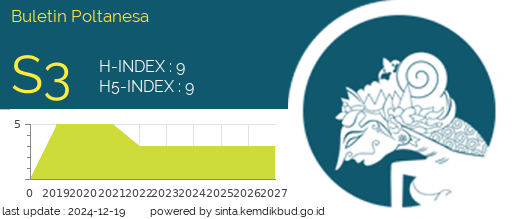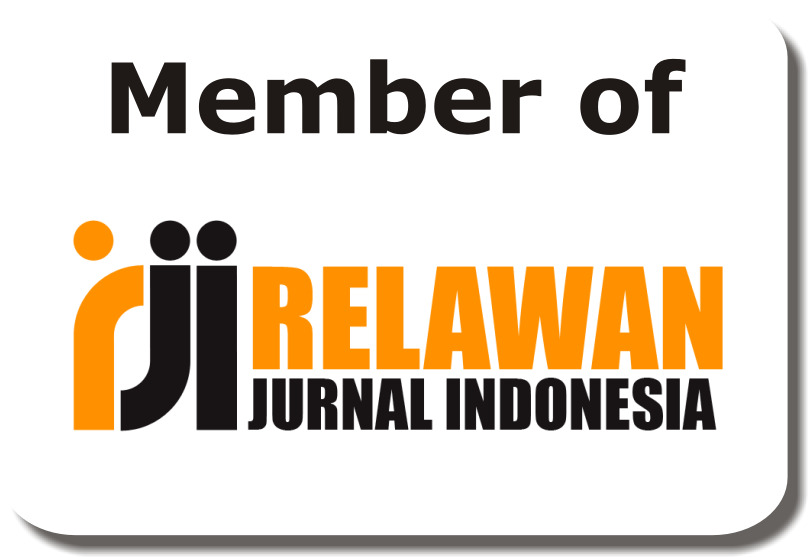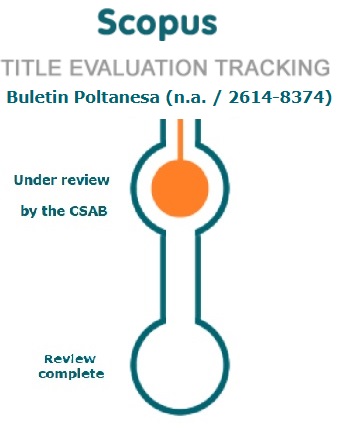Vegetation Analysis on the Upper Mahakam River Border
DOI:
https://doi.org/10.51967/tanesa.v24i1.2264Keywords:
Importance Value Index, Mahakam River, Succession, Vegetation Analysis.Abstract
Vegetation analysis on the upper Mahakam river border. The Mahakam River Basin (DAS) is very wide, reaching 7.724.300 Ha. The condition of the vegetation in the Mahakam watershed continues to change due to the development of plantations, mining, and settlements. On the other hand, efforts to maintain biological resources from the diversity of vegetation are needed to protect against extinction. Remote sensing data can be used to differentiate between primary and secondary vegetation economically. However, it has limitations for detecting vegetation composition and the number of individuals per unit area. Therefore, field surveys in the context of conducting vegetation analysis are still needed to complement remote sensing data. This study aims to analyze the vegetation in each growth phase, namely the seedling, sapling, pole, and tree phases on the Mahakam riverbank. The method used is to make observation plots of 13 plots for each growth phase. Plots of 2 x 2 m2 for seedling observation, 5 x 5 m2 for sapling level, 10 x 10 m2 for pole level, and 20 x 20 m2 for tree level observation. Based on data analysis, the seedling stage consisted of 30 species, the average number of stems was 25576.9 per ha, the species diversity index was 1.371, and the highest important value index was 21.8% of Coffea robusta. There were 17 species of saplings, an average number of 4,092.3 stems per hectare, a diversity index of 1,118, and the highest important value index of 39.5% from Theobroma cacao. The pole level contained 16 species, the average number of stems was 1023.1 per hectare, the diversity index was 1.138, and the highest interest index was 23.7% for Paraserianthes falcataria. The tree level consists of 30 species. The average number of stems is 255.8 per hectare, the diversity index is 1.282, and the highest important value index is 54.9% of Durio zibethinus. From the results of the study, it can be concluded that most of the vegetation in the Mahakam riverbank area is former fields or agricultural activities.
References
Asdak, C, 2007. Hidrologi dan Pengelolaan Daerah Aliran Sungai (cetakan keempat) Gadjah Mada University Press, Yogyakarta.
Astiani et al. 2021. Tree species distribution intropical peatland forest along peat depth gradients: Baseline notes for peatland restoration. Biodeversitas Vol. 22 Number 7, Page: 2571-2578,.
Astiani D,Ripin. 2016. The roles of community fruit garden (Tembawang) of Desa Cempedak,Kabupaten Sanggau on maintaining species diversity and standing biomass: an alternative effort on reducing carbonemission. Biodiversitas17 (1): 359-365.
DOI: 10.13057/biodiv/d170148.
Azizah, D. 2017. Kajian Kualitas Lingkungan Perairan Teluk Tanjungpinang Provinsi Kepulauan Riau. Dinamika Maritim. Vol. 6 Number 1, August 2017.
Babikir, A.A.A, 1981. The Land Rotation Cultivation System and Its Effect On Woody Vegetation Suppression In The. Jabal Mara Area of Sudan. JSTOR.Vol.62, pp.108-122. https://www.jstor.org/stable/44947431
Gunawan et al. 2011. Analisis Komposisi dan Struktur Vegetasi Terhadap Upaya Restorasi Kawasan Hutan Taman Nasional Gunung Gede Pangrango. JPSL Vol. (1) 2 : 93- 105 Desember 2011.
Helmanto, H., Nisyawati, Robiansyah,I., Zulkarnaen, R. N., and Fikriyya, N. 2020. Habitat preference and spatial distribution model of threatened species Saurauia microphylla in Mt. Slamet, Central Java, Indonesia. Biodeversitas. Vol. 21. No. 7. https://doi.org/10.13057/biodiv/d210710
Hidayat, S., Helmanto, H., Dodo, D., Purnomo, D. W. and Supriyatna, I. 2018. Habitat of Nepenthes spp. In the area of Sampit botanical garden. Biodeversitas. Vol. 19 No. 4.
https://doi.org/10.13057/biodiv/d190411
Iskandar J, Iskandar B. 2016. Plant architecture: structure of village homegarden and urban green space. Teknosain, Yogyakarta.
Lay, R. 2015. Shifting Cutivation Versus Sustainable Intensification. Reference Modul in Earth System and Environmental Sciences. https://doi.org/10.1016/B978-0-12-409548-9.09295-2
Magguran, AE. 1988. Ecological Diversity and Its Measurement. Princeton University Press
Muhlisin et al. 2021. Vegetation diversity and structureofurban parksinCilegon City,Indonesia, andlocal residents’ perception of its function. Biodeversitas Vol. 22 Number 7, July 2021. Pages: 2589-2603.
Muin and Astiani. 2018. Population and vegetation structure of ramin (Gonystylus bancanus) in secondary forests of Ketapang District, West Kalimantan, Indonesia. Biodeversitas. Volume 19, Number 2, March 2018. Page: 528-534.
Mulyani, A. and Sarwani, 2013. Karakteristik Dan Potensi Lahan Sub Optimal Untuk Pengembangan Pertanian Di Indonesia. DOI: 10.2017/jsdl.v7n1.2013.%p
Santoso, M. C., Sudargono, A., Rahmawati, T. 2018. Utilization of Land in The River Border Area in Sub-District Sukoharjo District in 2018. Journal of Geography Science and Education. DOI: https://doi.org/10.32585/jgse.v2i2.1352
Singh, K.K, Meentemeyer R.K. 2018. Comprehensive Remote Sensing. Book Chapter. https://www.sciencedirect.com/topics/earth-and-planetary-sciences/forest-inventory.
Siregar, M., Helmanto, H., Rakhmawati, S. U., 2019. Vegetation analysys of tree communities at some forest patches in North Sulawesi, Indonesia. Biodeversitas. Vol. 20 No. 3. https://doi.org/10.13057/biodiv/d200305
Siregar, M.H., Suendra, P., Siregar, M. 2005. Rosa odorata (green rose) in Bali Botanical garden:biological phenology and its propagation. Biodeversitas. Vol. 6 No.3. https://doi.org/10.13057/biodiv/d060309
Suparjo, Marjenah, Hardwinarto, S. Sumaryono, M. 2018. Health Evaluation of Pahu Watershet In Relation to Floot Problem At West Kutai Regency. Journal of Biodeversity and Envoronmental Science. Vol. 13, No. 3, p 48-55. http://www.innspub.net
Suryanto, Susilo, A., Onrizal, Adriansyah, M. and Muslim, T. 2018. Implementation of multi-system silviculture (mss) to improve performance of production forest management: a case study of pt. Sarpatim, central Kalimantan. Samboja Technology Conservation Research and Development Institute. DOI: 10.20886/ijfr.2018.5.1.1-19
Xie, Y. Sha, Z. and Yu, M. 2008. Remote sensing imagery in vegetation mapping: a review. Journal of Plant Ecology, Volume 1, Issue 1, March 2008, P.9-23 https://doi.org/10.1093/jpe/rtm005
Downloads
Published
How to Cite
Issue
Section
License
The copyright of this article is transferred to Buletin Poltanesa and Politeknik Pertanian Negeri Samarinda, when the article is accepted for publication. the authors transfer all and all rights into and to paper including but not limited to all copyrights in the Buletin Poltanesa. The author represents and warrants that the original is the original and that he/she is the author of this paper unless the material is clearly identified as the original source, with notification of the permission of the copyright owner if necessary.
A Copyright permission is obtained for material published elsewhere and who require permission for this reproduction. Furthermore, I / We hereby transfer the unlimited publication rights of the above paper to Poltanesa. Copyright transfer includes exclusive rights to reproduce and distribute articles, including reprints, translations, photographic reproductions, microforms, electronic forms (offline, online), or other similar reproductions.
The author's mark is appropriate for and accepts responsibility for releasing this material on behalf of any and all coauthor. This Agreement shall be signed by at least one author who has obtained the consent of the co-author (s) if applicable. After the submission of this agreement is signed by the author concerned, the amendment of the author or in the order of the author listed shall not be accepted.









